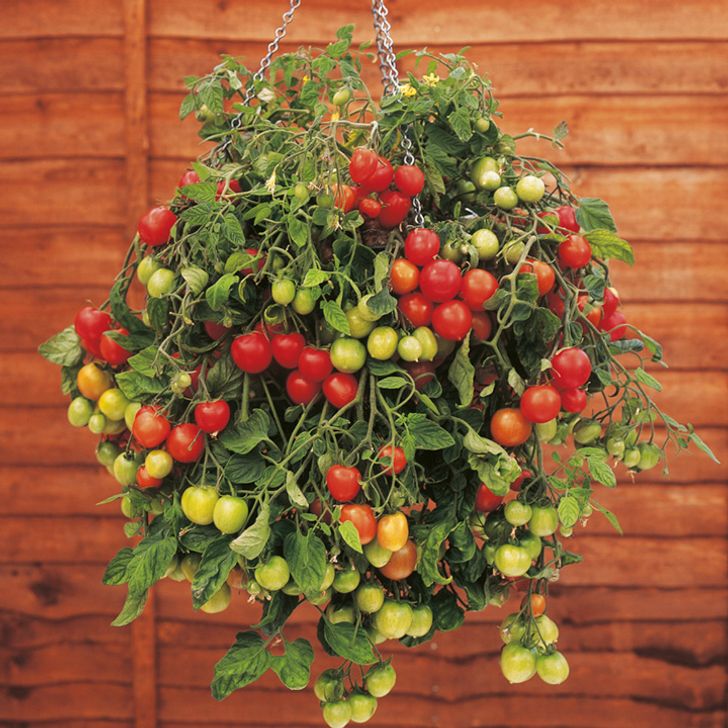17 Witty Children Whose Every Saying Is a Masterpiece

Sometimes you wish you could go out on your balcony, pull out some fresh vegetables and herbs from the gorgeous little garden you just happen to have there, and, like on TV, amaze everyone with your culinary talents. And, by the way, the said balcony (or even a windowsill) would look much nicer decorated with delicious greens.
To support such ambitious dreams, Bright Side chose a few interesting plants for you that you can easily grow at home.

You can easily grow red bell peppers in containers or pots to spice up your salads, sandwiches and pizza. Make sure to choose a warm, well-lit place and one of the varieties recommended for indoor growing.

Choose small varieties, and make sure to place the container in an area that receives tons of light. Keep the soil moist, but not soaked. Your carrots will be ready for harvesting in 80-90 days.
If you don’t have any special pots or containers, you can also use plastic bottles with the tops cut off (don’t forget to make drainage holes at the bottom). The optimum temperature for carrots is 55-75 degrees Fahrenheit (13-24 degrees Celsius).

Mint is an undemanding plant. It can be grown out of seeds or starter plants on your windowsill or out on the balcony even during winter. Make sure it gets enough light (but avoid direct sunlight) and water it regularly. The optimum temperature is 68-77 degrees Fahrenheit (20-25 degrees Celsius).
Fun fact: mint is not only tasty, but mint tea has also been known to soothe hangovers.

You don’t require any special skills to grow onions from bulbs or discarded onion bottoms at home. Just remember the basics: good soil, adequate drainage, good fertilizer.
At first, put your freshly planted onions in a cool dark place to allow them develop their root system a bit. After that, they’re going to need a lot of light. The optimum temperature is 64-68 degrees Fahrenheit (18-20 degrees Celsius). Don’t overheat them — the greens won’t like it.

Basil grows well in both pots and containers, out of seeds or starter packs. Pick a sunny spot, and keep it well watered and warm, with good drainage. When the top leaves reach about six inches in height, start pruning them. Pinch off any flowers as soon as they appear.
The optimum temperature for basil is 68-77 degrees Fahrenheit (20-25 degrees Celsius). Provide additional lighting during winter.

To grow cucumbers at home, choose F1 hybrid varieties, that produce only female flowers (fruits that are fertilised by male flowers are bitter tasting). If you’re successful in your gardening endeavour, each plant will produce up to 3-4 dozen cucumbers. You’ll have to put in extra effort with transplanting the plants regularly as they get bigger, but after that it’s mostly about regular watering and pinching out growing tips.
Use a 12’’ pot if growing in a container. The optimum temperature for cucumbers is 70-75 degrees Fahrenheit (21-24 degrees Celsius).

Choose dwarf types for growing at home and give them the best-lit spot you can find. For a continuous supply of tomatoes, start one or two new plants from seed every two weeks, keep the soil moist but not soggy, and protect them from the cold. Growing tomatoes will require a lot of patience and effort, but in the end this will make you even prouder of all your hard work.
The optimum temperature is 73-77 degrees Fahrenheit (23-25 degrees Celsius).

Sorrel is not only remarkably tasty, it also won’t mind being kept in a dark corner of your garden. You can start growing sorrel from seeds, cuttings, root division or transplant in either spring or early fall.
The temperature is not an issue either — it can survive even at a slight chill. So you can keep sorrel out on the balcony for as long as you wish, especially if it’s heated. Carefully pick fresh sorrel leaves when they are young and tender and just 4 or 5 inches tall.

Ginger is not only delicious, but also quite pleasant to look at. It’s known for calming nausea and motion sickness as well as reducing inflammation. Buy a chunk of ginger at the grocery store and cover it with soil in a container, making sure the freshest-looking buds face up. Wait for new growth to sprout out of the soil. If the root you purchased seems too dry, simply put it in warm water for a few hours to wake the buds up. Keep away from direct sunlight.
When your ginger is ready for harvesting, pull the entire plant out of the soil, cut off as much as you need, and replant the ginger the same way as described above. The optimum temperature is 68-77 degrees Fahrenheit (20-25 degrees Celsius).

This one will require all the patience you can muster. Start by finding a perfect pineapple — purchase it during the warmer months, making sure it’s all intact. Cut the tail off with a knife, let it dry for 3 or 4 days, put it in some sand until the roots develop (it’ll take 6-8 weeks). Later, when planting your pineapples in pots, use a light soil mix with perlite and sand.
Water as needed and provide with at least six hours of bright light daily. Don’t expect to see blooms for at least two to three years. The optimum temperature is 73-86 degrees Fahrenheit (23-30 degrees Celsius).

Strawberries can be grown at home all year round, with some additional lighting during winter months. Everbearing types are preferable — they’ll produce a crop in spring and another crop in fall, in addition to a few berries throughout the summer. The easiest way is to purchase plants, not to grow them from seeds. In three or four months a couple of plants will send out runners, and your plantation will become about 3 times bigger.
Keep your strawberries warm and don’t forget to pluck off the first flowers (to let the plants grow a bit stronger). The optimum temperature is 64-75 degrees Fahrenheit (18-24 degrees Celsius). Remember: if garden is indoors, then there are likely to be no insects around, so you’ll have to use a brush to pollinate your strawberries. For that, you just need to transfer the pollen from the stamens to the center of the flowers.

Thyme is a remarkable herb. It’s extremely fragrant, tasty and very low-maintenance. The main thing here is to provide it with enough light; even direct sunlight will be fine. And don’t forget to water it regularly, so that the soil is sufficiently moist but not soggy.
Don’t overdo it with fertilizers — thyme won’t appreciate the extra effort. It can be grown from both cuttings and seeds.
***
So, what yummy stuff are you growing at home?











